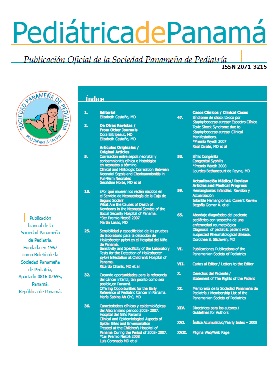About Other Journals
Authors
DOI:
https://doi.org/10.37980/im.journal.rspp.20221870Keywords:
malnutrition, socioeconomic aspects, environmental factorsAbstract
Socio-Economic and Environmental Determinants of Malnutrition in Children Under Three: Evidence from PDHS-2018.
Shahid M, Cao Y, Shahzad M, Saheed R, Rauf U, Qureshi MG, Hasnat A, Bibi A, Ahmed F. Socio-Economic and Environmental Determinants of Malnutrition in under Three Children: Evidence from PDHS-2018. Children. 2022; 9(3):361. https://doi.org/10.3390/children9030361
Abstract
Aims: This research examined the association of malnutrition with social and economic factors in general and environmental factors specifically, such as sanitation facilities and drinking water sources for Pakistan.
Methods: the authors used the most recent data of 1010 children under three years of age from the Pakistan Demographic and Health Survey (PDHS) 2017-2018. The cumulative index of anthropometric failure (CIAF) was developed to measure undernutrition status among children based on WHZ, WAZ and HAZ z-scores, respectively. The study applied discrete choice logistic methodology to find the relationship of undernutrition with socioeconomic characteristics. Interaction terms of drinking water source and sanitation facility were measured to see the impact of environmental factors on child malnutrition.
Results: The results of the study showed that the probability of malnutrition increases when the child had diarrhea recently and the child belongs to a deprived region like KPK, Sind and Balochistan. However, the chances of child malnutrition decrease with (1) an escalation in mothers' education, (2) an increase in household economic status, and (3) improved water source and sanitation facilities in the household. The only significant category in the interaction model was sanitation with improved water, which described households that had both improved water and improved sanitation facilities as having very low odds of malnutrition among their children.
Conclusion: The authors conclude that malnutrition in younger children is associated with improved water and sanitation facilities, maternal education, and household wealth in Pakistan.
---------------------------------------------
Adapting obstetric and neonatal services during the COVID-19 pandemic: a scoping review.
Gold, S., Clarfield, L., Johnstone, J. et al. Adapting obstetric and neonatal services during the COVID-19 pandemic: a scoping review. BMC Pregnancy Childbirth 22, 119 (2022). https://doi.org/10.1186/s12884-022-04409-4
Abstract
Background: Care for pregnant women and neonates must continue during pandemics. To maintain quality of care while minimizing physical contact during the severe acute respiratory syndrome-related coronavirus-2 (SARS-CoV2) pandemic, hospitals and international organizations issued recommendations on the delivery of maternal and neonatal care and the restructuring of clinical centers and academic services. Early in the pandemic, the recommendations were based on expert opinion and provided a one-size-fits-all set of guidelines. Our objective was to examine these recommendations and provide rationale and context to guide clinicians, administrators, educators, and researchers on how to adapt maternity and neonatal services during the pandemic, regardless of jurisdiction.
Methods: Our initial database search used medical subject headings and free-text search terms related to coronavirus infections, pregnancy, neonatology, and summarized relevant recommendations from international society guidelines. Subsequent targeted searches through December 30, 2020 included relevant publications in general medical and obstetric journals and updated society recommendations.
Results: We identified 846 titles and abstracts, of which 105 English-language publications met the eligibility criteria and were included in our study. A multidisciplinary team representing physicians from various disciplines, academics, administrators, and training program directors critically evaluated the literature to compile recommendations from multiple jurisdictions, including a Canadian quaternary care hospital, to provide context and rationale for viable options.
Interpretation: Different schools of thought exist regarding effective practices in obstetric and neonatal services. Our critical review presents the rationale for effectively modifying services, depending on the phase of the pandemic, the prevalence of infection in the population, and the availability of resources.
--------------------------------------------------
Foreign body aspiration in children: diagnostic clues through a clinical case.
D'Addio E, Palma PL, Di Sessa A, Guarino S, Marzuillo P, Apicella A. Foreign Body Aspiration in Children-Diagnostic Clues through a Clinical Case. Pediatric Reports. 2022; 14(1):81-85. https://doi.org/10.3390/pediatric14010012
Abstract
Foreign body aspiration is common in the pediatric age group, especially in boys. Despite the high frequency of this potentially life-threatening event, it is not always easy to recognize given the high variability of clinical presentation and the potential for "pauci-symptomatic" inhalation. In addition, a variable latency of symptom onset from the time of aspiration may be possible giving difficulties in the anamnestic identification of inhalation. We describe the case of a 19-month-old boy who initially presented to the emergency department for head trauma. However, clinical evaluation revealed severe unexplained respiratory distress requiring tracheal intubation. After our evaluation, we hypothesized that the severe respiratory distress produced an altered state of consciousness with subsequent head trauma. Radiologic findings projected suspicion of foreign body aspiration because of the presence of a left whole lung atelectasis. Computed tomography showed an abrupt interruption of the main bronchus 12 mm from the hull. Subsequent bronchoscopy identified a 2 cm almond. We will review the literature to highlight the diagnostic issues behind foreign body aspiration in children by highlighting diagnostic clues that are useful to emergency physicians in the management of this condition.
Downloads
Published
Issue
Section
License
Copyright (c) 2022 Infomedic Intl.Derechos autoriales y de reproducibilidad. La Revista Pediátrica de Panamá es un ente académico, sin fines de lucro, que forma parte de la Sociedad Panameña de Pediatría. Sus publicaciones son de tipo gratuito, para uso individual y académico. El autor, al publicar en la Revista otorga sus derechos permanente para que su contenido sea editado por la Sociedad y distribuido Infomedic International bajo la Licencia de uso de distribución. Las polítcas de distribución dependerán del tipo de envío seleccionado por el autor.






